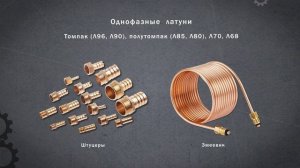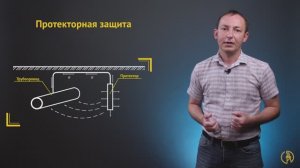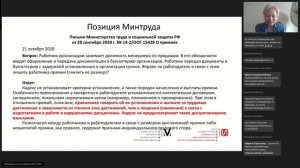
 2:07
2:07
2025-09-17 17:49

 1:48
1:48

 1:48
1:48
2025-09-27 10:48

 5:15
5:15

 5:15
5:15
2025-09-11 17:15
![Самые жестокие завоеватели в истории? / [История по Чёрному]](https://pic.rutubelist.ru/video/2025-09-22/8f/5b/8f5b92672e89625eec19c110dbe923b0.jpg?width=300)
 55:14
55:14
![Самые жестокие завоеватели в истории? / [История по Чёрному]](https://pic.rutubelist.ru/video/2025-09-22/8f/5b/8f5b92672e89625eec19c110dbe923b0.jpg?width=300)
 55:14
55:14
2025-09-23 12:00

 7:40
7:40

 7:40
7:40
2025-09-25 17:00

 19:12
19:12

 19:12
19:12
2025-09-11 14:41

 1:06:32
1:06:32

 1:06:32
1:06:32
2025-09-16 12:56

 8:30
8:30

 8:30
8:30
2025-09-12 15:00

 2:15
2:15

 2:15
2:15
2025-09-25 22:19

 23:31
23:31

 23:31
23:31
2025-09-28 11:00

 1:50:16
1:50:16

 1:50:16
1:50:16
2025-09-15 14:19

 27:58
27:58

 27:58
27:58
2025-09-20 10:00

 7:19
7:19

 7:19
7:19
2025-09-24 15:35

 24:23
24:23

 24:23
24:23
2025-09-11 09:20

 16:17
16:17

 16:17
16:17
2025-09-17 18:32

 10:29
10:29

 10:29
10:29
2025-09-22 09:39

 1:23:24
1:23:24

 1:23:24
1:23:24
2025-09-18 12:00

 3:20
3:20
![Леся Кир - Альфонс (Премьера клипа 2025)]() 3:23
3:23
![Динара Швец - Нас не найти (Премьера клипа 2025)]() 3:46
3:46
![Женя Белоусова - Раненая птица (Премьера клипа 2025)]() 2:47
2:47
![Шамиль Кашешов - Когда мы встретились с тобой (Премьера клипа 2025)]() 3:10
3:10
![ARTIX - На небе луна (Премьера клипа 2025)]() 2:59
2:59
![Инна Вальтер - Татарский взгляд (Премьера клипа 2025)]() 3:14
3:14
![Zhamil Turan - Губки не целованы (Премьера клипа 2025)]() 2:37
2:37
![Даша Эпова - Мой любимый человек (Премьера клипа 2025)]() 2:11
2:11
![Сергей Сухачёв - Я наизнанку жизнь (Премьера клипа 2025)]() 3:07
3:07
![KLEO - Люли (Премьера клипа 2025)]() 2:32
2:32
![Ислам Итляшев - Не реви (Премьера клипа 2025)]() 2:41
2:41
![Шавкат Зулфикор & Нурзида Исаева - Одамнинг ёмони ёмон буларкан (Премьера клипа 2025)]() 8:21
8:21
![Зульфия Чотчаева - Холодное сердце (Премьера клипа 2025)]() 2:52
2:52
![Владимир Ждамиров, Игорь Кибирев - Тик так (Премьера 2025)]() 3:30
3:30
![Tural Everest, Руслан Добрый - Красивая (Премьера клипа 2025)]() 3:16
3:16
![POLAT - Лунная (Премьера клипа 2025)]() 2:34
2:34
![NAIMAN - Плакала (Премьера клипа 2025)]() 2:21
2:21
![Рустам Нахушев - Письмо (Лезгинка) Премьера клипа 2025]() 3:27
3:27
![Азамат Исенгазин - Мой свет (Премьера 2025)]() 2:47
2:47
![KhaliF - Я розы тебе принес (Премьера клипа 2025)]() 2:06
2:06
![Протокол выхода | Exit Protocol (2025)]() 1:24:45
1:24:45
![Я бы тебя пнула, если бы могла | If I Had Legs I'd Kick You (2025)]() 1:53:30
1:53:30
![Порочный круг | Vicious (2025)]() 1:42:30
1:42:30
![Девушка из каюты №10 | The Woman in Cabin 10 (2025)]() 1:35:11
1:35:11
![Школьный автобус | The Lost Bus (2025)]() 2:09:55
2:09:55
![Код 3 | Code 3 (2025)]() 1:39:56
1:39:56
![Супруги Роуз | The Roses (2025)]() 1:45:29
1:45:29
![Чёрный телефон 2 | Black Phone 2 (2025)]() 1:53:55
1:53:55
![Святые из Бундока | The Boondock Saints (1999) (Гоблин)]() 1:48:30
1:48:30
![Диспетчер | Relay (2025)]() 1:51:56
1:51:56
![Богомол | Samagwi (2025)]() 1:53:29
1:53:29
![Свинтусы | The Twits (2025)]() 1:42:50
1:42:50
![Заклятие 4: Последний обряд | The Conjuring: Last Rites (2025)]() 2:15:54
2:15:54
![Только ты | All of You (2025)]() 1:38:22
1:38:22
![Трон: Арес | Tron: Ares (2025)]() 1:52:27
1:52:27
![Баллада о маленьком игроке | Ballad of a Small Player (2025)]() 1:42:60
1:42:60
![Все дьяволы здесь | All the Devils are Here (2025)]() 1:31:39
1:31:39
![Большое смелое красивое путешествие | A Big Bold Beautiful Journey (2025)]() 1:49:20
1:49:20
![Хищник | Predator (1987) (Гоблин)]() 1:46:40
1:46:40
![Большой Лебовски | The Big Lebowski (1998) (Гоблин)]() 1:56:59
1:56:59
![Синдбад и семь галактик Сезон 1]() 10:23
10:23
![Команда Дино. Исследователи Сезон 2]() 13:26
13:26
![Карли – искательница приключений. Древнее королевство]() 13:00
13:00
![Приключения Тайо]() 12:50
12:50
![Лудлвилль]() 7:09
7:09
![Паровозик Титипо]() 13:42
13:42
![Неодети]() 11:27
11:27
![Пингвиненок Пороро]() 7:42
7:42
![Космический рейнджер Роджер Сезон 1]() 11:32
11:32
![Супер Дино]() 12:41
12:41
![Псэмми. Пять детей и волшебство Сезон 1]() 12:17
12:17
![Сборники «Умка»]() 1:20:52
1:20:52
![Минифорс. Сила динозавров]() 12:51
12:51
![Приключения Пети и Волка]() 11:00
11:00
![Таинственные золотые города]() 23:04
23:04
![Полли Покет Сезон 1]() 21:30
21:30
![Мотофайтеры]() 13:10
13:10
![Чуч-Мяуч]() 7:04
7:04
![Хвостатые песенки]() 7:00
7:00
![Игрушечный полицейский Сезон 1]() 7:19
7:19

 3:20
3:20Скачать Видео с Рутуба / RuTube
| 256x144 | ||
| 424x240 | ||
| 640x360 | ||
| 848x480 | ||
| 1280x720 | ||
| 1920x1080 |
 3:23
3:23
2025-11-19 11:51
 3:46
3:46
2025-11-12 12:20
 2:47
2:47
2025-11-11 17:49
 3:10
3:10
2025-11-22 12:41
 2:59
2:59
2025-11-18 12:12
 3:14
3:14
2025-11-18 11:36
 2:37
2:37
2025-11-13 11:00
 2:11
2:11
2025-11-15 12:28
 3:07
3:07
2025-11-14 13:22
 2:32
2:32
2025-11-11 12:30
 2:41
2:41
2025-11-18 12:35
 8:21
8:21
2025-11-17 14:27
 2:52
2:52
2025-11-18 11:48
 3:30
3:30
2025-11-13 11:12
 3:16
3:16
2025-11-12 12:12
 2:34
2:34
2025-11-21 13:26
 2:21
2:21
2025-11-18 12:25
 3:27
3:27
2025-11-12 14:36
 2:47
2:47
2025-11-19 11:44
 2:06
2:06
2025-11-11 18:00
0/0
 1:24:45
1:24:45
2025-11-13 23:26
 1:53:30
1:53:30
2025-11-20 21:03
 1:42:30
1:42:30
2025-10-14 20:27
 1:35:11
1:35:11
2025-10-13 12:06
 2:09:55
2:09:55
2025-10-05 00:32
 1:39:56
1:39:56
2025-10-02 20:46
 1:45:29
1:45:29
2025-10-23 18:26
 1:53:55
1:53:55
2025-11-05 19:47
 1:48:30
1:48:30
2025-09-23 22:53
 1:51:56
1:51:56
2025-09-24 11:35
 1:53:29
1:53:29
2025-10-01 12:06
 1:42:50
1:42:50
2025-10-21 16:19
 2:15:54
2:15:54
2025-10-13 19:02
 1:38:22
1:38:22
2025-10-01 12:16
 1:52:27
1:52:27
2025-11-06 18:12
 1:42:60
1:42:60
2025-10-31 10:53
 1:31:39
1:31:39
2025-10-02 20:46
 1:49:20
1:49:20
2025-10-21 22:50
 1:46:40
1:46:40
2025-10-07 09:27
 1:56:59
1:56:59
2025-09-23 22:53
0/0
2021-09-22 23:09
2021-09-22 22:54
 13:00
13:00
2024-11-28 16:19
 12:50
12:50
2024-12-17 13:25
 7:09
7:09
2023-07-06 19:20
 13:42
13:42
2024-11-28 14:12
 11:27
11:27
2025-10-10 18:25
 7:42
7:42
2024-12-17 12:21
2021-09-22 21:49
 12:41
12:41
2024-11-28 12:54
2021-09-22 22:23
 1:20:52
1:20:52
2025-09-19 17:54
 12:51
12:51
2024-11-27 16:39
 11:00
11:00
2022-04-01 17:59
 23:04
23:04
2025-01-09 17:26
2021-09-22 23:09
 13:10
13:10
2024-11-27 14:57
 7:04
7:04
2022-03-29 15:20
 7:00
7:00
2025-06-01 11:15
2021-09-22 21:03
0/0

